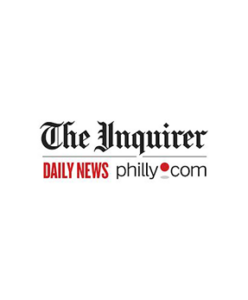(This article originally appeared in the Philadelphia Inquirer)
Last year, the Federal Reserve issued a study that focused on firms owned by people of color. The good news was that, according to the study, although firms owned by people of color account for just 18% of small employers, they are actually a rapidly growing segment of small businesses compared with white-owned firms.
But, unfortunately, in Philadelphia, where the majority of the population is Black, another study from Pew found that only 6% of small businesses city-wide are Black-owned and 4% are owned by Hispanics. Firms of color continue to face structural barriers in acquiring the capital, knowledge, and market access necessary for growth.
The Federal Reserve study also found that firms owned by people of color “tend to have weaker banking relationships, experience worse outcomes on credit applications, and are more reliant on personal funds.”
So what to do about this?
Sure, there are grant and loan programs targeted at small businesses owned by underrepresented groups at both the federal and regional level. There are equal-opportunity initiatives intended to give these same businesses access to government projects. But government can do only so much. Others need to step in and help this growing segment of small businesses. And three large organizations in the area are doing just that.
Accounting giant Ernst & Young is one such organization. The “Big 4″ firm, with offices in Center City and around the country, has built a community of underrepresented group-owned small businesses that enjoy education, coaching, network connections and access to capital through its Entrepreneur Access Network.
“If you think about the wealth disparity in the U.S. between black and Latinos and everyone else, you see how important entrepreneurship and business ownership is,” Lee Henderson, an audit partner at the firm and the executive sponsor of the EY Entrepreneurs Access Network, told me. “We’ve had a tremendous amount of success. Some of the companies in the cohort have been able to get in front of folks to sign big contracts. They’ve gotten significant funding. They’ve formed alliances and so on.”
EY’s program, which includes 10 companies this year from the Philadelphia area, requires business owners to apply and participate in a series of educational and networking events over a 12-month period — and stay in touch beyond. The program’s success hinges not just on capital but something even more important: relationships to people (lawyers, accountants, bankers and advisers) that may otherwise be inaccessible.
Other recent corporate programs for businesses owned by underrepresented groups don’t require this level of commitment, but still provide many resources.
One program is Legal Zoom’s Fast Break for Small Business, a recently launched community-based initiative that will ultimately — in partnership with the National Basketball Association — award $6 million in grants and legal services to support underrepresented businesses around the country.
“It’s just a wonderful, wonderful opportunity,” Grant Hill , NBA Hall of Famer and Atlanta Hawks co-owner, told me in a podcast discussion (Hill is a spokesperson for the program). “We’re providing solutions and we’re giving people a chance, in spite of the harsh reality of what’s happening right now, particularly with minority-owned small businesses that ‘hey, you’re in an underserved community and we can help.’”
Wells Fargo is also getting into this business space, but taking a different approach. The banking giant had already previously established its Open for Business Fund, which provides support for Community Development Financial Institutions and other nonprofits that serve diverse small businesses, with a focus on Black, African American, Latino, Asian American, American Indian, and Alaska Native entrepreneurs.
But last year, the firm also launched another nationwide initiative to “ share hope “ with its customers, communities, and beyond. Under the program, the company has been investing in beautifying business districts in more than a dozen cities across the country and “encouraging everyone to join in by shopping locally and supporting small businesses as they emerge from the economic impact of the pandemic.”
Among the beneficiaries of the program were the shops and businesses in West Philadelphia’s 52nd Street corridor, where Wells Fargo worked with the Enterprise Center, a community development corporation that supports local initiatives, to help identify the businesses that participated in the program and ensured that things got carried out through completion.
“This was a tremendous opportunity right to really zero in the businesses that have served a vital role in that community,” said the bank’s head of small business, Derek Ellington. “The small businesses in that community play a critical part in supporting all activities in the area. It’s great to see how the transformation has occurred.”
As helpful as these programs are, let’s be clear that these three companies are not completely altruistic. There’s always a profit motive behind the action. And no one is hiding that fact.
Legal Zoom wants to introduce businesses to their legal services. Ernst & Young is looking for that next big accounting client. Wells Fargo wants to expand its banking reach. This is not charity. This is a way to provide not only money and resources but education to an underserved and yet growing population of business owners that will continue to be a significant part of the U.S. economy in the years to come. And become revenue-generating customers for these firms.
“For many reasons, we want these companies to be billion-dollar companies and Fortune 500 companies in the future, for sure,” Henderson said.
Well, good for them. And good for the underserved-ownership firms that take advantage of these programs.

